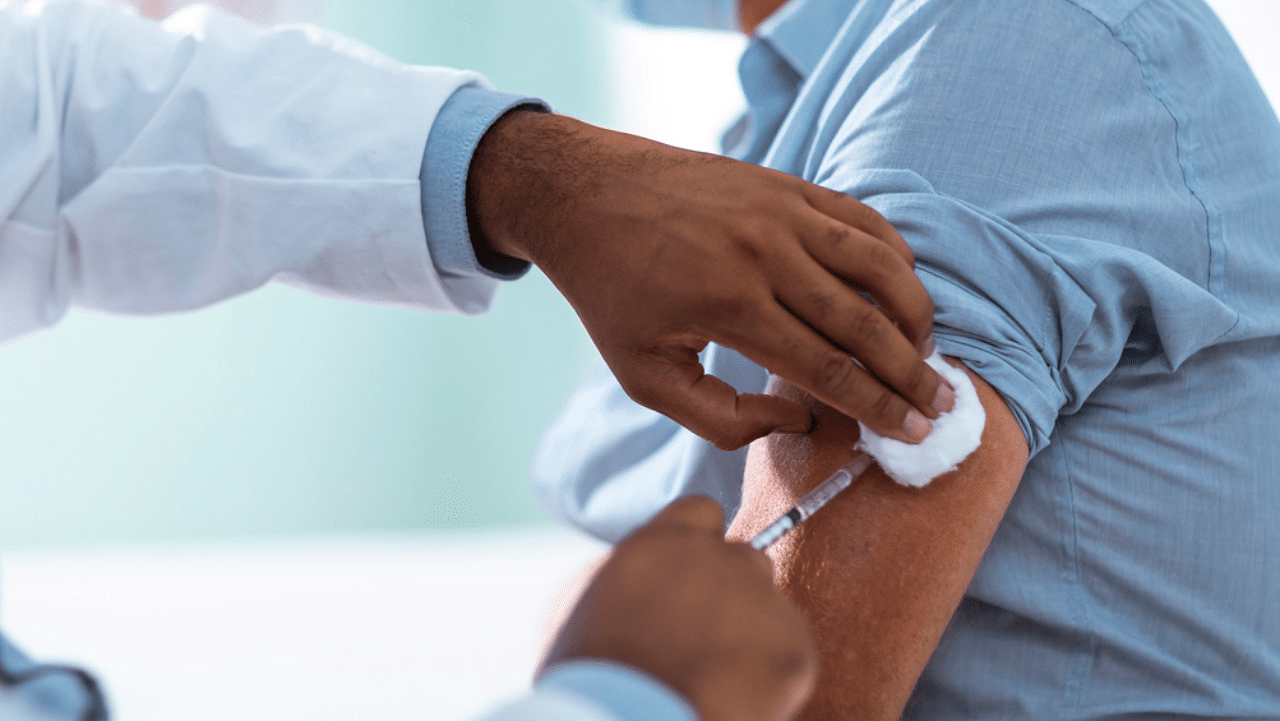
The Covid-19 vaccine was launched in Karnataka on January 16. This week, the state started administering the second dose of vaccination to those who had taken the first. Of the targeted 8.2 lakh healthcare workers, about 50% have taken the first dose. About 52,608 of them had taken the second dose until February 17. Out of 2.8 lakh frontline workers, such as civic workers and police, only 34% have taken the first dose of the vaccine, as per the Karnataka Health and Family Welfare media bulletin on February 17. In the next phase of inoculation, beginning end of March, people in the general population over 50 years of age and those below 50 but with co-morbid conditions are to be given the vaccine.
Four main issues have been responsible for the low uptake of the vaccine so far. The first is the technical glitches in the CoWIN (Covid Vaccine Intelligence Network) portal. For example, details of some of the recipients of the first dose did not show up on the portal. Second, in many cases, the date, place and time of the vaccination was not communicated to the recipients or they were informed late. Third, there is no mechanism to resolve queries and clear doubts about the vaccine, side-effects, personal medical conditions, or even about the interval between the two doses. Many doctors and health workers prefer 8-10 weeks between doses, as per WHO guidelines, as opposed to the four weeks’ gap being followed in India. There is also hesitancy toward the second dose among those who had developed fever, swelling, vomiting, nausea, headache and other mild ailments when they took the first dose. The fourth issue is misinformation. Thus, the main problems in the vaccination drive are related to information and two-way communication between people and the authorities.
Vaccine hesitancy and a wait-and-watch approach will continue if public communication is not ramped up. Now is the time to develop various sets of clear messages and information, education and communication (IEC) materials and media kits and send them out to people of different age groups and health and personal conditions.
Broadcasting accurate messages at the community level, particularly in rural areas, is key to preventing the spread of misinformation/rumours and to alleviate apprehensions and increase vaccine acceptance.
The Union Health Ministry has provided guidance on national, state and district-level communication activities. Advocacy, capacity-building, media engagement and social media, social mobilisation and community engagement and AEFI (Adverse Effects Following Immunisation) crisis communication are the key elements of this strategy.
The Karnataka government’s present communication outreach is inadequate. It will have to ramp up training mechanisms to develop an extensive network of volunteers and champions to implement the communication plan. Online training can be a useful mode to reach scale with speed.
Content development for electronic, print and community and social media should be taken up to amplify factual information. Communication plans and materials should be developed and disseminated in Kannada and other regional languages. Proactive messaging involving celebrities will help build a positive media narrative and public discourse.
Several organisations, including the private sector, are willing to contribute in the vaccination effort. Releasing communication packages for them to use will help influencers and mobilisers at various levels on the ground to speak in one voice. Hard-to-reach areas, traditionally hesitant and resistant groups can be identified and reached through NGOs.
Given the digital divide, there has to be clear communication on the process of registration on CoWIN, specifying where, how, when (date and time) and what documents are required to enrol. The information should clarify eligibility criteria and pre-conditions for vaccination as also ways to access post-vaccination care and support, if required. This will to a great extent address vaccine hesitancy that could arise out of apprehensions, misconceptions, myths and lack of information.
Personnel at the state and district control rooms and call centres should be specially trained to answer FAQs. In case of any AEFI, a clear communication strategy can support mobilisers and health workforce to manage crisis situations. A mechanism needs to be developed to help the general public, patients and healthcare professionals to report adverse events post-vaccination through call centres and other modes.
Integrating gender perspectives in this communication is important. It should take into account how women receive information, their health-seeking behaviours, media habits and how they perceive and act upon health messages. It is generally observed that personal, face-to-face communications, such as through ASHA and anganwadi workers work best.
Given the complexity of rolling out vaccination at such a large scale, and the observed complacency and vaccine hesitancy, a well-devised communication strategy is key to speeding up the effort.
(The writer is a Research Scientist and Assistant Professor at the Ramalingaswami Centre on Equity and Social Determinants of Health, Public Health Foundation of India, Bengaluru)